|
The Browser
page below is the Home Page for the Online Library Management Application.
It is referred
to as a "Landing Page" as it allows users to load and view the page without need for a Log on or any security clearance.
This is the
only page in the site that does not require authentication of the user.
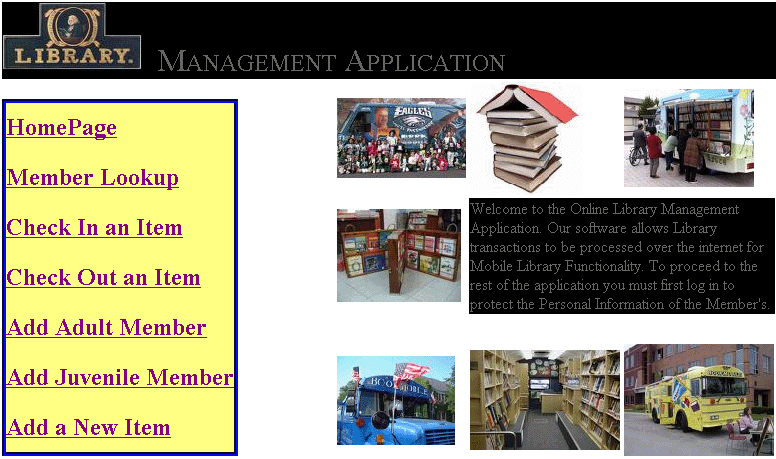
In order to navigate to any other page on the site you will have to authenticate with a user name and password. This
type of authentication is Windows Based and once entered is set to persist through out the session if active or timeout in
30 minutes.
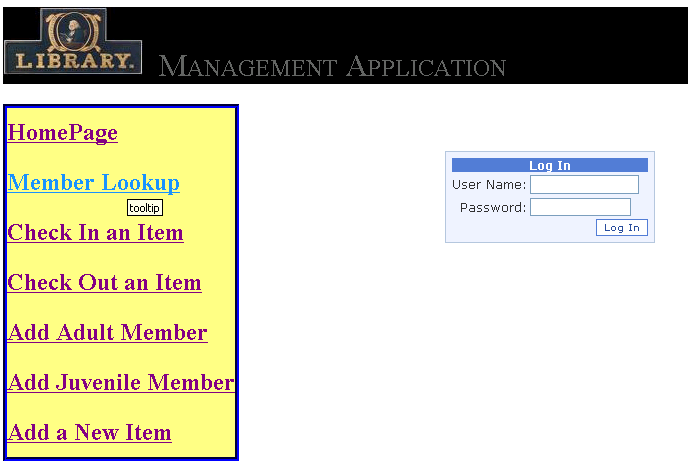
The web site
has similar functionality to the Windows Application but the pieces used to create the look and feel of the site are very
different from the controls used in the Forms Project. The techniques used to get this look and feel are a combination of
raw HTML, APS.Net Server Controls, Cascading Style Sheets, a Master Page, Themes and Skins, and Client Side JavaScript.
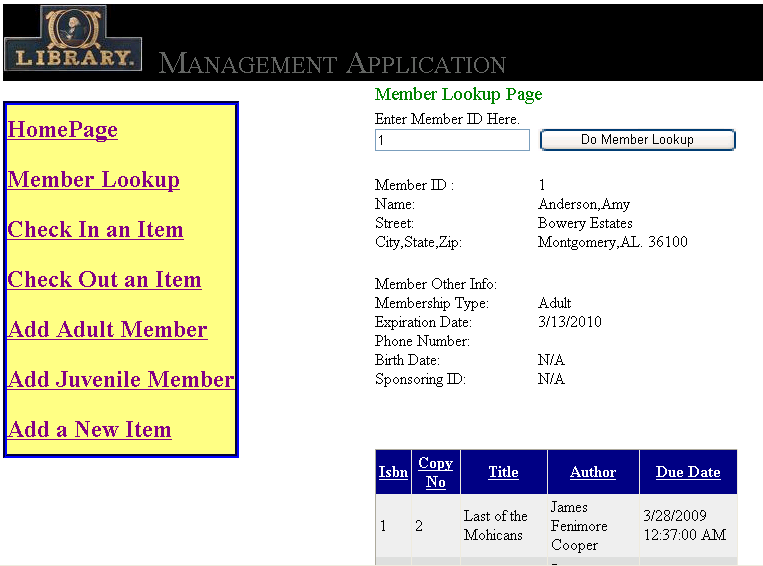
Take a moment to compare the similarities between the Member Look up page above and the Add Juvenile Member Page below.
The Menu and Header are exactly the same on both pages. These display characteristics are "inherited" from a pre-defined
Master page which allows for base layout format and the ability to use skins to format the appearance of controls.
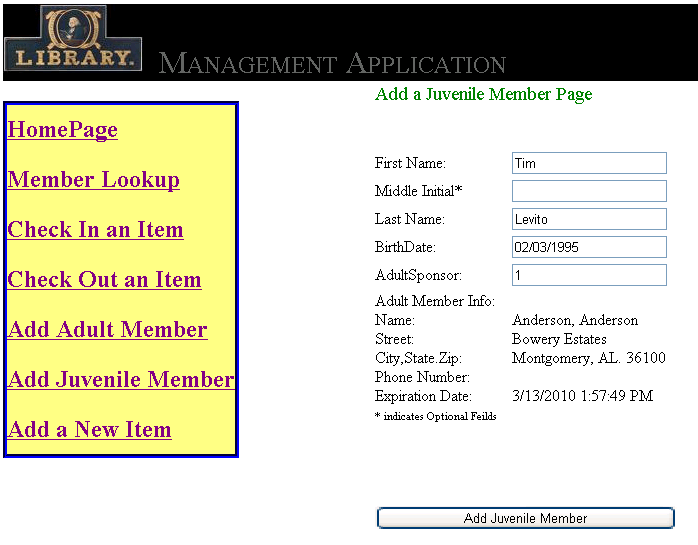
Visual Studio
and ASP.Net Creates several types of code and views for that code to combine into the web page that is generated on the web
server for the dynamic browser experience.
First and
probably the most recognized is the page designer. (below)
This is a
visual IDE with a drag and drop functionality for designing the look of your controls and has tools for organizing your
web sites content.
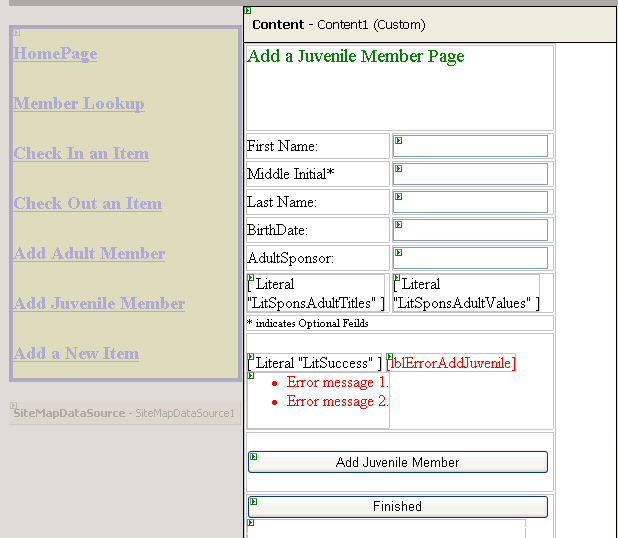
The most
recognizable controls on the Web Form designer are ASP.Net and HTML. For the most part the HTML controls are considered static
and will be rendered on the page exactly as they are shown in the designer.
The ASP.Net
controls run on the web server and generate the specific HTML for the page on each post back. The ASP.Net Controls often have
their own built in functionality and they offer the developer a chance to add functionality with a C# code behind.
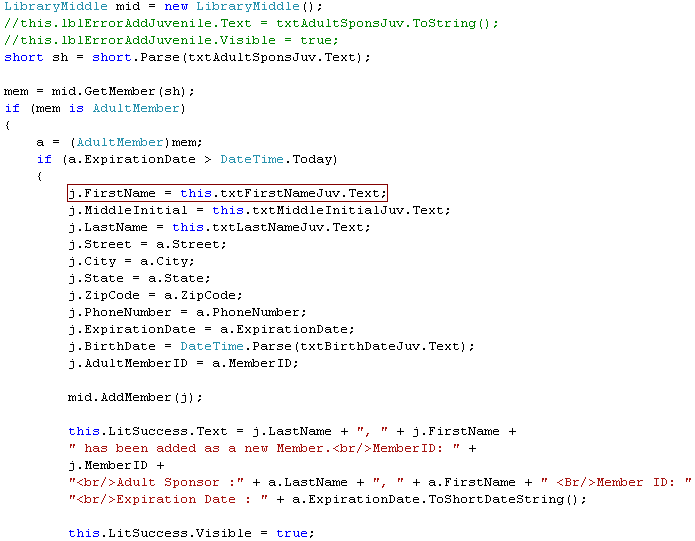
The C# code behind (above) shows a portion of the Button Click Event Handler on the Add Juvenile Member Web
Form. It's basically assigning the value from the textbox control to a local variable, using it to make "GetMember" method
call to the Business Layer, and then populating the values of the Juvenile member object with proper values or the sponsoring
adult member. And finally, submitting the Juvenile object for insertion with a call to the "AddMember" method also on
the Business Layer.
Upon successful completion the results are returned to the user by populating a literal control with the necessary information.
The code behind below illustrates how manual the code has to be in order to get the desired behavior to give the Web
Form a Dynamic effect.
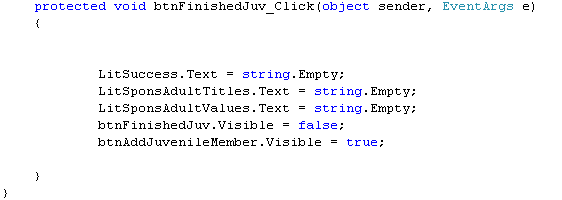
The source code is automatically generated from the Visual Studio designer and can be added to or edited directly. It
is a Compilation of ASP.Net control code, HTML tags, Style and Other Information.
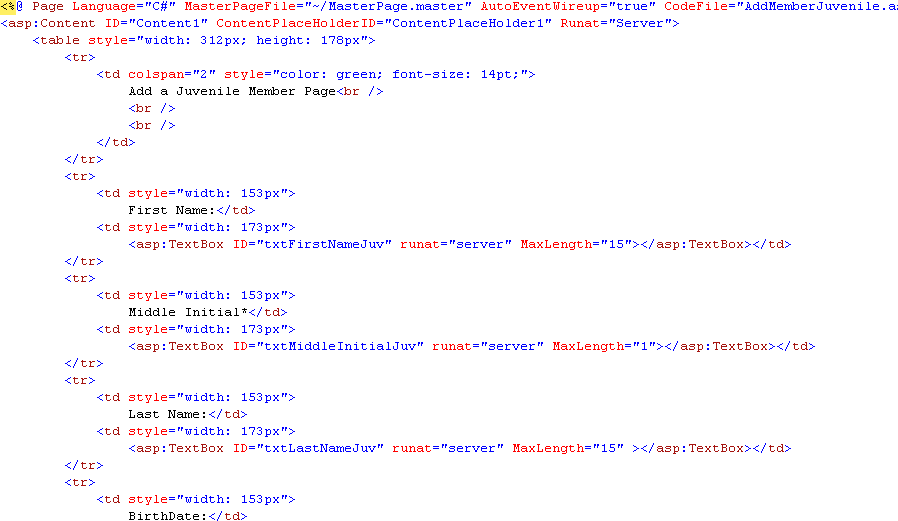
The ASP.Net source code is used to generate HTML on the server dynamically for rendering the Browser's Web Page. The
HTML source is shown below.
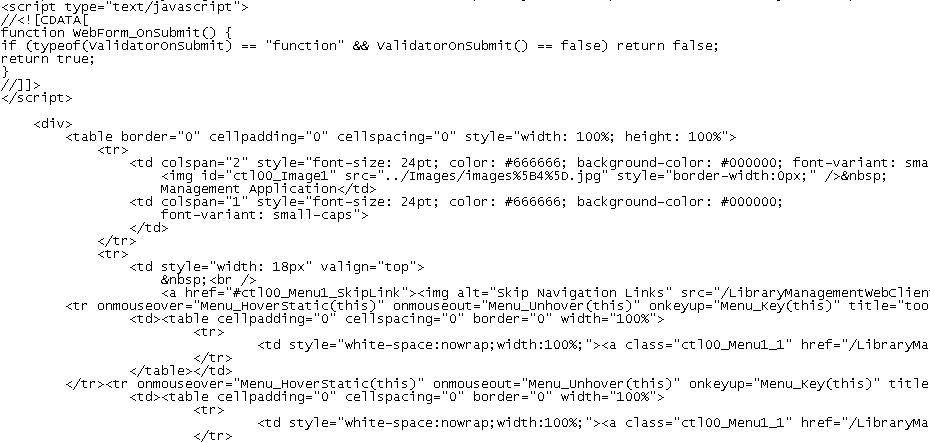
Extensive Validations at the User interface reduce network traffic and provide for a better overall user experience.
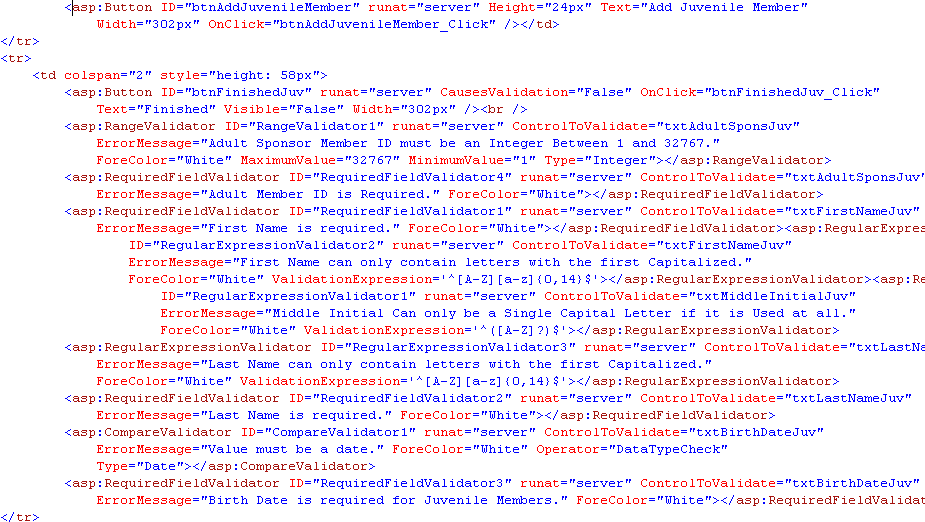
The end result, a working Web page with a secure connection to the Main application which allows a mobile functionlity
to the end user.
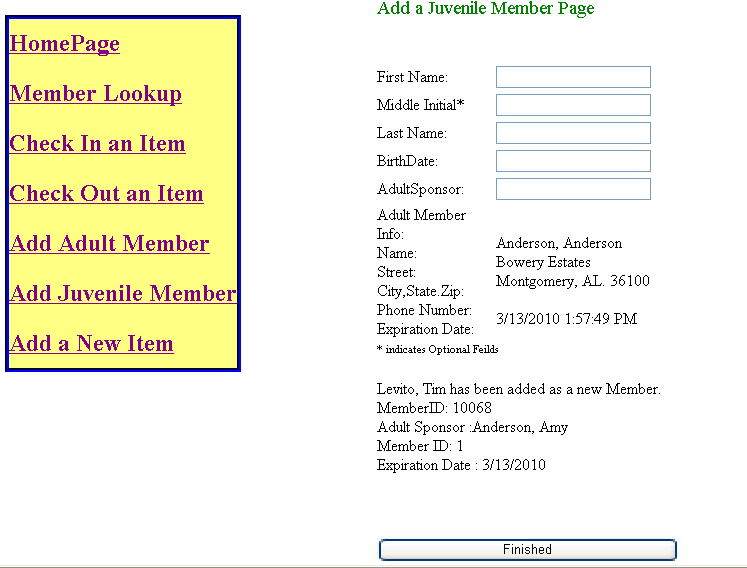
I could go deeper into the specifics of the behind the scene coding as there are numerous techniques for accomplishing
similar specific behaviors from an ASP.Net web site. In fact the body of relevant information pertaining to the behind the
scenes coding can and has filled several books.
At this stage I think the browser screen shot tells the most to the web site developer about the general ability and
skills involved in creating this project and I would be happy to discuss the sites inter workings on security, state management,
and configuration.
Thank You for Looking through my Work and Skill set Portfolio, I look forward to discussing career and project
opportunities with you in the near future.
|
